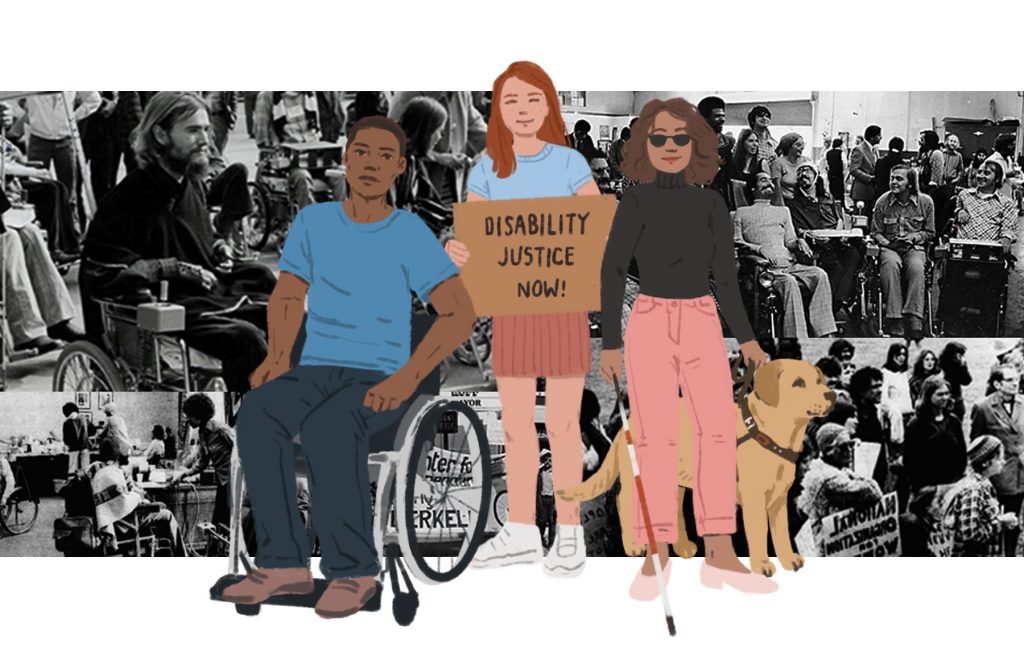Stigma and Disability: Reframing the Issue from Handicapped to Hands-In-Cap
Author: Nino Nadirashvili
Industrialization marked an interesting shift in the perception of people with disabilities. “The world was no longer shaped by a divine plan but by human choice.”1 The secularization of the world meant that when it came to the fate of humankind, more and more weight was put on science and the progress made by humans than divine will.2 Douglas C. Baynton analyzes the tragic attitudes adopted by the world towards the disabled at the beginning of the twentieth century in his article ‘These Pushful Days’: Time and Disability in the Age of Eugenics. These attitudes developed towards the people with disabilities at the beginning of the twentieth century might still linger in our perceptions today, even though the world has made considerable progress in understanding disability. After all, we are still far away from a world where people with disabilities are not excluded from multiple dimensions of social life. Research suggests that children with disabilities, as well as their caregivers, face stigma both within their families and in their communities, which results in the lack of social support, as well as a potential reduction in treatment-seeking (Abdul-Chani et al, 2). Additionally, minority groups are susceptible to experiencing what Abdul-Chani et al frame as “‘double stigma’”, due to having a disability and being a part of an underrepresented group (2). In cultures that place a lot of importance on a sense of belonging in the community, the stigma around disability might have heavier manifestations. There are also important gaps in research when it comes to the racial and ethnic variations in the stigma surrounding disability that need to be filled (Abdul-Chani et al, 3). Overall, the stigma surrounding disability is a multidimensional issue with different manifestations across the world. It is interesting, therefore, to go back to the radical negative shift that took place at the beginning of the twentieth century in framing disability to understand the subtle manifestations of those roots in the world today.

As Baynton suggests, in addition to the development of the competitive industrial economy, the adoption of the evolutionary metaphors from biology at the beginning of the twentieth century also contributed to humanity becoming engrossed by the idea of a constant race, and those who were not able to keep up the pace came to be seen as a burden (48). As a result, the term “handicapped” was often used by educators for those who needed “help to win the battle of life” (Baynton, 48). The disabled were framed as being handicapped in two main races in life: the economic and the evolutionary (Baynton, 48). As the world became preoccupied with efficiency and progress, no room was left for those who could not keep up.
Tracing the term “handicapped” does not lead to the specific meaning the world has given to it in the twentieth century, however. The word comes from an old English game, “hand-in-cap”, where players would draw money from the cap. The progression of the game enabled the wins and losses to even out (Baynton, 47). In that sense, all the players have their hands in the same cap; all of them are “hand-in-capped”. Reframing the understanding of the word in this way has further implications. Using the term “handicapped” to refer to the disabled people is ironically admitting the equalizing effect of the race of life. If we all have our hands in the same cap, then questioning the world that relies on evolutionary ideas and speed also leads to questioning what and who it was made for in the first place. The end of the century marked that questioning, as the foundational ideas of the race of life and evolution were not seen in the same light (Baynton, 60). The foundations of the stigma surrounding disability that has persisted carry the values of the beginning of the twentieth century, but challenging those ideas has brought a new awareness to understanding disability.
References:
Monica M. Abdul-Chani, Christopher P. Moreno, Julie A. Reeder, Katharine E. Zuckerman, Olivia J. Lindly, Perceived community disability stigma in multicultural, low-income populations: Measure development and validation, Research in Developmental Disabilities, Volume 115, 2021, 103997, ISSN 0891-4222, https://doi.org/10.1016/j.ridd.2021.103997.
Douglas C. Baynton, ‘These Pushful Days’: Time and Disability in the Age of Eugenics, Health and History, Vol. 13, No. 2, Special Feature: Health and Disability (2011), pp. 43-64, Australian and New Zealand Society of the History of Medicine, https://www.jstor.org/stable/10.5401/healthhist.13.2.0043
Livia Gershon, JSTOR Daily, October 9, 2020, https://daily.jstor.org/the-rise-of-disability- stigma/
Abdul-Chani, Monica M., Christopher P. Moreno, Julie A. Reeder, Katharine E. Zuckerman, and Olivia J. Lindly. “Perceived community disability stigma in multicultural, low- income populations: Measure development and validation.” Research in Developmental Disabilities 115 (2021): 103997.